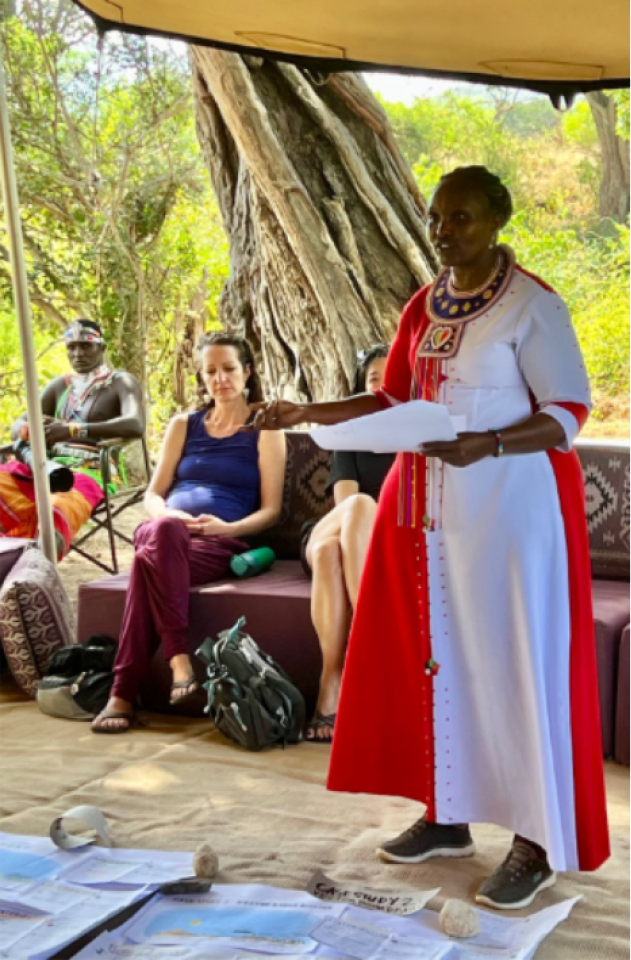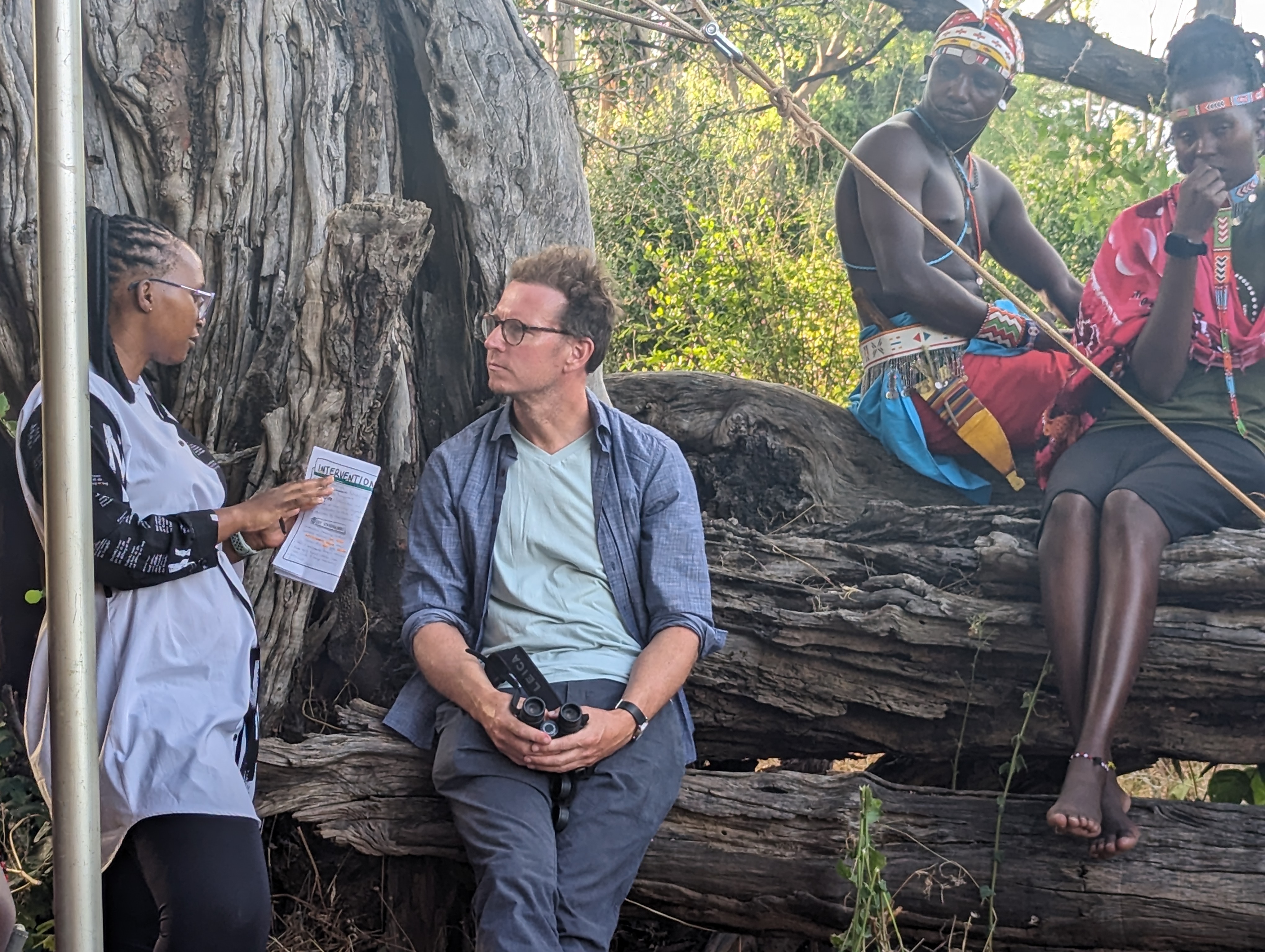How do you bring people from different academic and geographic worlds together to discuss merging their scientific interests? How can global and community-rooted processes work together? How do you talk about global environmental and health challenges and ground them in local conditions?

The natural environment in which the gathering was held, the interconnected discussions with Samburu representatives, the Bush dinner and storytelling, and the growing understanding by the visitors of the range of local challenges and solutions related to water access and quality, healthcare, pregnancy, livestock and soil management, amongst other aspects, helped permeate the reality of health and nature interconnectedness.
Proceedings were opened by Hon. Pauline Lenguris MP, a health professional, the Women’s Representative for Samburu and member of the Kenyan Government’s Parliamentary Committee on Health. She explained that her role is to represent the Samburu community and spoke eloquently about the impacts of prolonged drought and of emerging healthcare challenges, such as malnutrition and cancer, facing her constituents, and the work being done to address them.




Open Space and Action Planning Conclusions
Before the workshop closure, participants came together to create work streams for developing a community of practice dedicated to building an investment case for co-management of ecosystems, food systems, and public health systems in Africa. A vision statement, designed around the future that members of the Namunyak community who participated in the workshop would like to see in 2050, was termed the “Namunyak Declaration”. A roadmap of actions lay the foundations for the birth of a new spirit and commitment to see this effort help us imagine Deep time.



